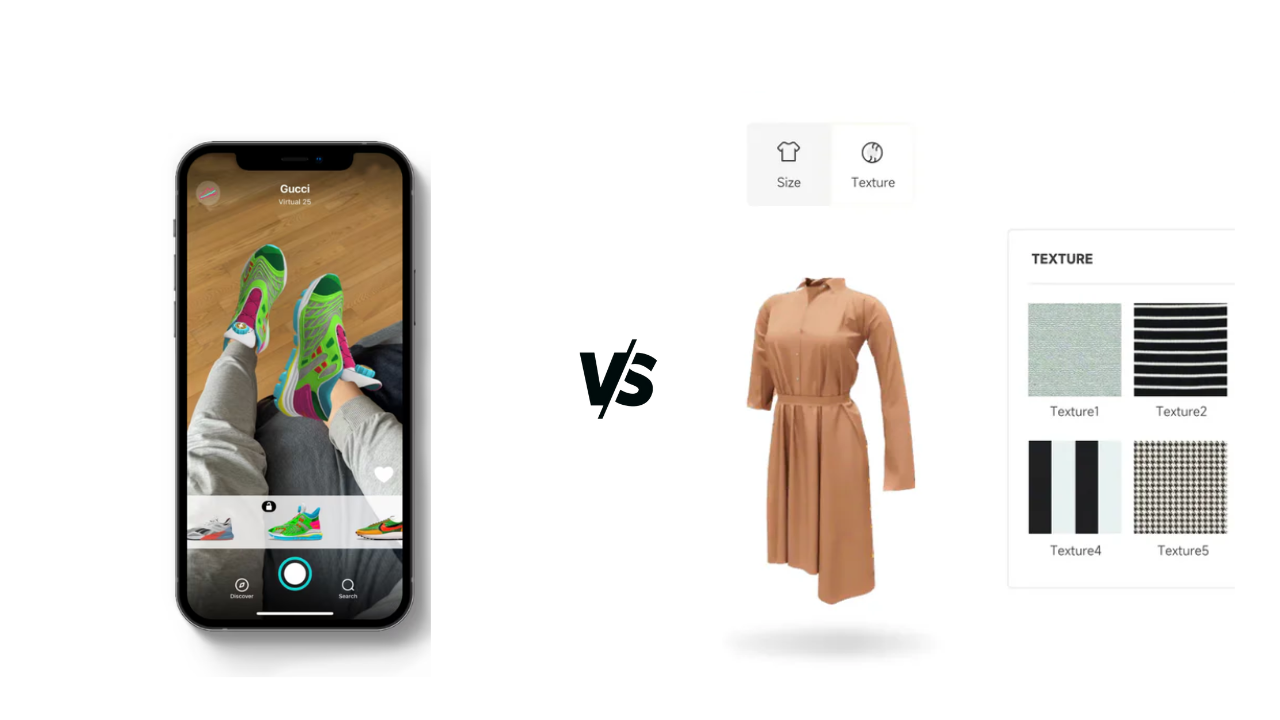
"The future of retail is not just about buying things; it's about creating experiences."
The Rise in use of AR (Augmented Reality)
Augmented Reality (AR) technology has emerged as a prominent force across various industries, including gaming, business, technology, and fashion. Introduced as a concept in the late 90s, AR has seen exponential advancements, evolving from an idea to a practical tool utilized in fields such as medicine, gaming, and technology.
In the fashion industry, AR has been particularly transformative. It allows consumers to view products in real-time within their own environment, providing an immersive experience that boosts confidence in purchasing decisions. By bridging the gap between the digital and physical worlds, AR offers a realistic preview of products, enabling customers to try and test items before buying them.
Before the advent of AR, the fashion industry relied heavily on traditional technologies like static images, video advertisements, and in-store experiences to showcase products. While effective, these methods lacked the interactive and personalized touch that AR provides. Customers had to rely on imagination or visit physical stores to gauge how a product might look or feel in real life.
This integration of AR not only enhances the user experience but also represents a significant leap forward in how products are marketed and sold, making the shopping process more interactive and personalized. As AR continues to evolve, its potential to reshape consumer interactions and business practices across various sectors is boundless.
Use of AR in various Industries
- Manufacturing: According to research conducted by ECON Market Research, the augmented reality (AR) technology sector achieved the highest revenue share in 2022, accounting for over 71.5%. This impressive figure is largely due to manufacturers' preference for AR technology, which enables them to access both manual and automated data simultaneously.
- Healthcare: A research conducted by the University College of London showed that integrating AR into robotic surgery makes it safer and improves patient recovery time by 20%.
- Retail: With Augmented Reality in retail, online shopping gets a new turn. Customers get to virtually try on items, customize and interact with their product and make their decision.(Internal Backlinking of a blog)
- Education: According to a detailed industry analysis by Fact.Mr, the global AR market in education is expected to grow to a valuation of US$ 55.84 billion
3D customization and Virtual Try-ons
Virtual Try-ons:
AR technology enables customers to try on clothes, shoes, accessories, and makeup virtually. This can be done through mobile apps or smart mirrors in stores. Virtual try-ons help reduce the need for physical fitting rooms and lower return rates by ensuring better purchase satisfaction.
- Example: Apps like Wanna Kicks allow users to see how different shoe models look on their feet in real-time.
- Impact: Retailers using AR have seen almost 25% decrease in their return rates.
3D Customization:
3D customization involves creating detailed digital models of products, which can then be manipulated to change colors, materials, and features. This process not only provides a unique and engaging shopping experience but also helps brands to collect valuable data on customer preferences and trends.
- Example: Customizable products platforms like DIYVERSE offer customers the ability to design their own hand bags and various other products, selecting the fabrics, color and other options.
- Impact: Brands using 3D customization and AR report a significant increase in sales and customer loyalty, with some seeing a 20% boost in repeat purchases.
Virtual Try-ons vs 3D Customization
In the realm of enhancing customer engagement and satisfaction in retail, both Virtual Try-ons (VTO) and 3D customization stand out as transformative technologies, albeit with distinct approaches. Virtual Try-ons utilize AR to allow consumers to visualize how clothing, accessories, or makeup will look on themselves in real-time, either through mobile apps or smart mirrors. This capability not only reduces the reliance on physical fitting rooms but also decreases return rates significantly by ensuring better purchase decisions. On the other hand, 3D customization offers a more interactive experience by enabling customers to personalize products through detailed digital models. This process allows for modifications in color, material, and design features, providing a deeper level of engagement and creativity. Brands adopting 3D customization often witness higher sales and increased customer loyalty, as the ability to tailor products aligns more closely with individual preferences. Both technologies represent significant advancements in bridging the gap between digital and physical shopping experiences, catering to different aspects of consumer needs and expectations in today's competitive retail landscape.
Getting Started with 3D Customization
Embarking on 3D customization involves several key steps to ensure a seamless and engaging experience for both businesses and customers. First, select a reliable 3D customization platform that offers user-friendly interfaces and robust design capabilities, consider thob as a example. This allows for detailed manipulation of products, enabling customers to change colors, materials, and features in real-time.
To start, gather high-quality digital assets of your products, ensuring they are accurately represented in 3D models. Collaborate with 3D artists or use professional software to create these assets.
Starting the journey in 3D can be overwhelming. Some guides to getting started includes docs of thob.studio, Guide to 3D configurators
Ensure that your website or app is optimized for performance, as 3D customization can be resource-intensive. Offering tutorials or guided experiences can help users navigate the customization process more easily. Finally, collect and analyze data on customer preferences and interactions with the 3D customization tool to refine and improve the user experience continuously.
Conclusion
AR, 3D customizations etc. are no longer science fiction; they're here today! Whether you're a business owner looking to enhance your customer experience or simply someone curious about this exciting technology, there's an AR application, 3D customization tool waiting to be explored. Dive in and discover the possibilities of these technologies yourself.
